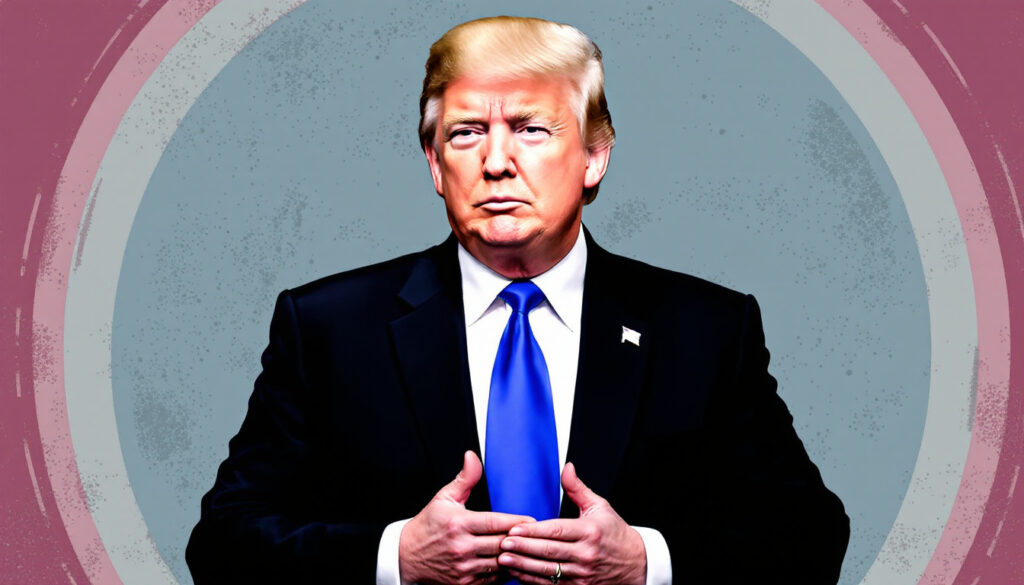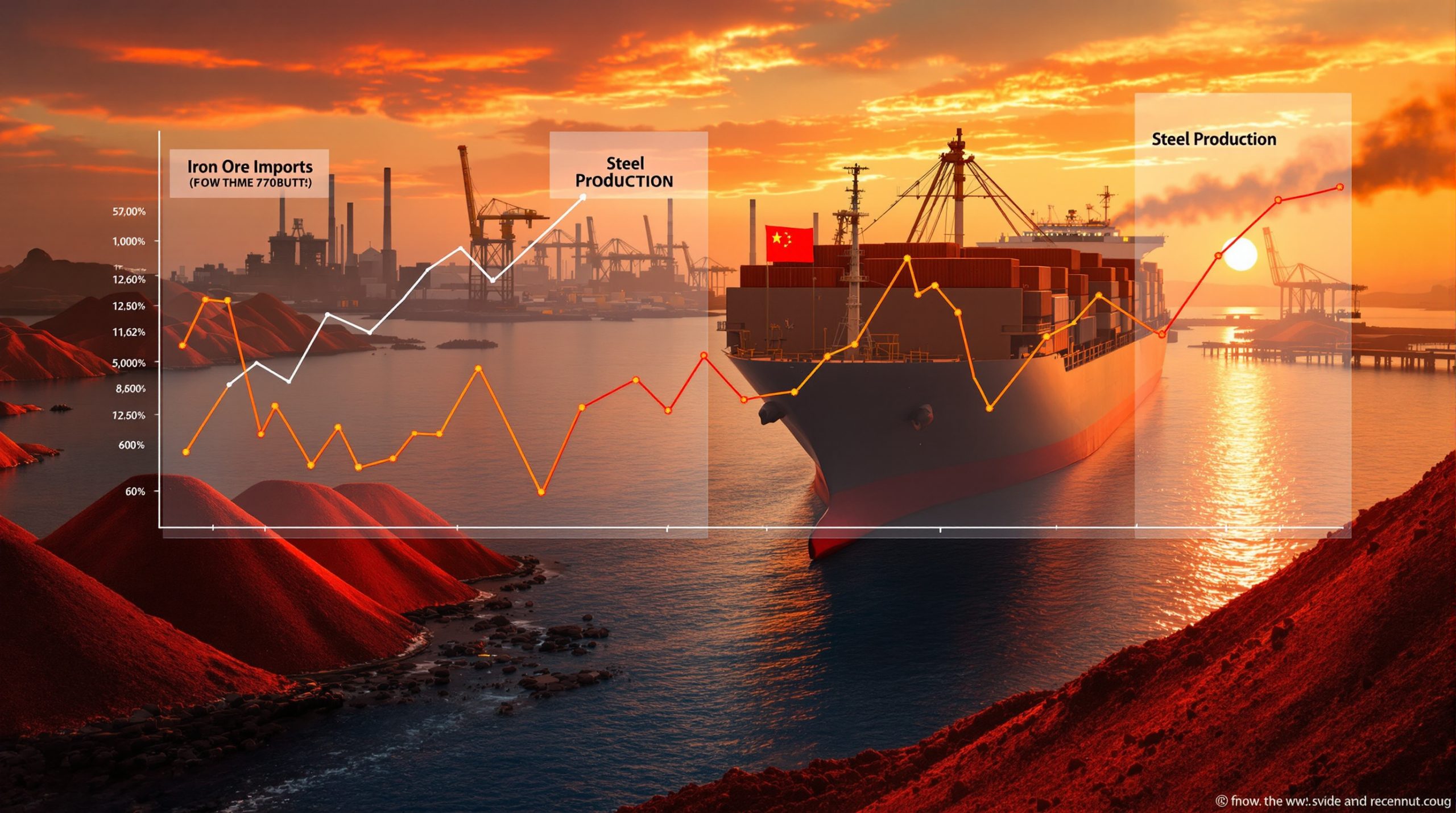How Will Trump's Tariffs Impact Gold Prices?
In the complex world of economic policies and financial markets, few relationships are as nuanced as the connection between presidential trade policies and precious metals. Donald Trump's tariff strategies have created significant ripples across global markets, with particular implications for gold investors. Understanding comprehensive gold market analysis becomes essential for navigating these uncertain times.
Understanding the Trump-Era Tariff Policies
Trump's aggressive trade approach bears striking resemblance to economic strategies implemented decades ago. This historical echo provides valuable context for investors seeking to navigate today's uncertain landscape.
Historical Parallels to Nixon's Economic Policies
Trump's "Make America Great Again" economic approach shares remarkable similarities with Richard Nixon's policies from the 1970s. Nicholas Frappell of ABC Refinery notes that both administrations implemented significant trade barriers that fundamentally reshaped global commerce.
Nixon's 1971 suspension of the gold standard led to a 10% devaluation of the US dollar and established the floating exchange rate system that continues today. This seismic shift in monetary policy preceded a decade of economic turbulence that gold investors remember well.
The parallels don't end there. Both presidents employed tariffs as economic weapons, creating what Frappell describes as "economic shock" strategies. Nixon's 10% import surcharge in 1971 mirrors Trump's broader tariff implementation, though the latter has been more targeted and aggressive in scale.
Current Tariff Implementation Strategy
Trump's tariff strategy has focused intensely on Chinese imports, targeting approximately 60% of goods from the manufacturing giant and effectively creating practical trade embargoes in certain sectors. Unlike previous administrations that used tariffs surgically, Trump's market impact represents a fundamental restructuring of America's trade relationships.
This expansion of tariffs to multiple trading partners, including historical allies, has introduced unprecedented uncertainty into global markets. The implementation methodology, using both Section 301 (unfair trade practices) and Section 232 (national security) trade laws, has created multi-layered disruptions across economic sectors.
As H.R. Haldeman famously noted during the Nixon era: "Once the toothpaste is out of the tube, it is awfully hard to get it back in" – an apt description of the lasting impacts these tariff policies may have on global trade structures.
Why Do Tariffs Create Economic Uncertainty?
Tariffs aren't simply diplomatic bargaining chips – they fundamentally alter economic equations for businesses, consumers, and investors alike. Understanding these mechanisms helps explain why gold markets react so distinctively to trade barriers.
The Stagflation Effect
"Tariffs raise prices and act as a tax on the domestic consumer, which will hit America's highly consumption-led economy," warns Frappell. This observation highlights a critical economic reality: tariffs function essentially as domestic consumption taxes, raising prices for American consumers at a time when consumer spending represents approximately 70% of US GDP.
This tax-like effect creates fertile ground for stagflation – the economically painful combination of high inflation with economic stagnation. The 1970s provided a textbook example of stagflation's devastating effects, with the oil crisis creating supply constraints while prices rose and growth stalled.
The Federal Reserve, committed to its 2% inflation target, will likely prioritize inflation control over growth during tariff-induced price increases. This monetary tightening during economic deceleration could amplify stagflationary pressures, creating an environment historically favorable to gold.
Global Supply Chain Disruptions
Modern supply chains are intricate global networks developed over decades. Tariffs don't simply shift production – they fracture these ecosystems in ways that create cascading effects:
- Increased costs for raw materials and components
- Extended lead times as suppliers relocate production
- Quality control challenges in new manufacturing locations
- Inventory management complications amid uncertain supplies
- Higher logistics expenses with rerouted shipping
These disruptions compound to create systemic uncertainty that markets historically struggle to price efficiently. Goldman Sachs warns that "high U.S.-China tariffs could precipitate a precipitous drop in Chinese exports," sending shockwaves through interconnected global markets.
The potential for retaliatory tariffs from affected nations further complicates this picture, as witnessed during previous trade tensions with the EU, Canada, and Mexico. These counter-measures accelerate global market volatility and economic fragmentation – conditions that traditionally benefit gold.
How Do Gold Markets Respond to Trade Barriers?
Gold's reputation as the ultimate safe haven asset is put to the test during periods of trade tension. Historical patterns reveal important insights for today's investors navigating tariff-induced volatility.
Gold as a Safe Haven During Economic Uncertainty
Gold has historically served as a refuge during periods of economic and geopolitical uncertainty. Analysis of gold price movements during previous trade conflicts reveals a consistent pattern: as trade barriers rise, so typically does gold's appeal.
This relationship stems from several factors:
- Gold's negative correlation with the US dollar, which often weakens during trade tensions
- Increased demand for inflation hedges as tariffs raise consumer prices
- Reduced opportunity cost of holding non-yielding assets when economic growth slows
- Flight to quality assets during periods of market volatility
- Central bank diversification away from dollars during geopolitical uncertainty
The Trade Policy Uncertainty Index (TPUI), which tracks economic uncertainty related to trade policies, shows a notable correlation with gold price movements. Periods of elevated TPUI readings have historically coincided with stronger gold performance, particularly when combined with inflationary pressures.
Current Gold Market Indicators
Gold prices surged approximately 18% in 2024 amid escalating tariff announcements, outperforming most traditional asset classes. This performance echoes gold's behavior during the 2018-2020 U.S.-China trade tensions, though with greater magnitude given the broader scope of current tariff proposals.
Institutional investors have responded decisively, with gold-backed ETFs seeing inflows of approximately $60 billion in 2024 – a 25% year-over-year increase. This capital migration suggests sophisticated market participants are positioning for prolonged trade-related uncertainty through various gold ETF strategies.
Trading volumes in both spot and futures gold markets have increased substantially, with the COMEX seeing daily volume spikes of 40-60% following major tariff announcements. This liquidity surge indicates both heightened interest and increased hedging activity across market participants.
Compared to other traditional safe-haven assets, gold has outperformed:
| Asset Class | 2024 YTD Performance |
|---|---|
| Gold | +18% |
| US Treasuries | +3.2% |
| Japanese Yen | -2.1% |
| Swiss Franc | +1.8% |
| Bitcoin | +12.3% |
This outperformance highlights gold's unique position at the intersection of geopolitical hedge, inflation protection, and monetary alternative – precisely the combination of attributes investors seek during trade conflicts.
What Are the Projected Employment Impacts?
Tariffs reshape not just prices but entire labor markets. Understanding these employment shifts provides valuable context for gold's potential performance in a changing economic landscape.
Chinese Manufacturing Sector Consequences
Goldman Sachs has projected potentially 16 million job losses in China due to aggressive U.S. tariffs, with impacts concentrated in retail and wholesale manufacturing sectors. This staggering figure represents approximately 2% of China's total workforce and would constitute one of the largest sectoral employment shifts in modern economic history.
The disruption would be particularly acute in export-dependent regions like Guangdong, Jiangsu, and Zhejiang provinces, where manufacturing employment rates could fall by 8-12%. These regional concentrations risk creating socioeconomic instability that could further complicate U.S.-China relations.
Beyond the immediate employment impact, these manufacturing disruptions would trigger domino effects throughout global supply chains:
- Component manufacturers losing Chinese clients
- Logistics providers facing reduced shipping volumes
- Consumer product companies scrambling for alternative suppliers
- Raw material producers adapting to shifting demand patterns
- Financial institutions managing increased default risks
As Frappell notes, "The domino effect on global supply chains will reshape labor markets" far beyond China's borders, creating ripple effects that could take years to fully materialize.
Domestic Employment Considerations
The employment impact within the United States presents a mixed and complex picture. While tariff proponents highlight potential manufacturing job creation, economic research suggests more nuanced outcomes.
U.S. manufacturing has added approximately 500,000 jobs in 2024, concentrated in sectors directly protected by tariffs. However, these gains have been partially offset by an estimated 1.2 million positions lost in logistics, retail, and import-dependent manufacturing – sectors facing higher input costs and reduced trade volumes.
The net employment effect involves significant sectoral shifts rather than aggregate gains:
- Traditional manufacturing seeing modest job growth (+2-3%)
- Advanced manufacturing adopting more automation to offset higher labor costs
- Service sectors experiencing contraction in trade-dependent regions
- Import-competitive industries expanding workforces
- Export-dependent businesses facing headwinds from retaliatory tariffs
These employment shifts contribute to economic uncertainty while potentially accelerating wage inflation in expanding sectors – a combination that has historically supported gold prices.
How Might Central Banks Respond?
Central banks face complex policy decisions when navigating tariff-induced economic distortions. Their responses can significantly influence gold's performance across multiple timeframes.
Federal Reserve Policy Options
The Federal Reserve faces a particularly challenging balancing act during periods of tariff-induced inflation. With rates already at 5.25%-5.5% in 2024 – the highest since 2001 – the central bank must weigh inflation control against growth concerns.
Historical precedent suggests the Fed will prioritize its inflation mandate when consumer prices rise meaningfully above its 2% target. This approach echoes Paul Volcker's aggressive rate hikes in the early 1980s to combat stagflation, though today's Fed benefits from greater communication tools and forward guidance capabilities.
The Federal Reserve's potential policy responses include:
- Additional rate hikes to combat tariff-induced inflation
- Forward guidance emphasizing inflation control
- Balance sheet adjustments to manage market liquidity
- Enhanced communication regarding inflation expectations
- Coordination with fiscal authorities on economic stimulus
These monetary policy decisions will significantly influence gold markets, as higher rates typically increase the opportunity cost of holding non-yielding assets like gold. However, if inflation outpaces rate hikes, real interest rates could remain negative – an environment that has historically benefited gold prices.
International Central Bank Coordination
Beyond the Federal Reserve, international central banks must navigate their own complex responses to global trade tensions. The European Central Bank, Bank of Japan, and People's Bank of China each face unique challenges that may lead to divergent monetary policies.
Evidence of this divergence is already emerging, with ECB gold reserves increasing approximately 15% in 2024 to hedge against euro volatility amid trade uncertainty. This central bank gold acquisition represents a significant shift in institutional asset allocation and provides important support for gold markets.
Currency valuation impacts remain a critical concern, with potential for competitive devaluations reminiscent of the "beggar-thy-neighbor" policies of the 1930s. Such currency competition would create additional volatility beneficial to gold's status as a non-sovereign store of value.
Central bank gold reserve management strategies have evolved significantly, with emerging economies like Russia, Turkey, and India accelerating gold acquisitions to reduce dollar dependence. This de-dollarization trend accelerates during periods of trade tension and provides structural support for gold prices beyond typical safe-haven demand.
What Are the Long-Term Implications for Gold?
Looking beyond immediate market reactions, tariff policies may create structural changes to global trade and monetary systems that fundamentally alter gold's role in the financial landscape.
Structural Changes to Global Trade
As Frappell aptly references H.R. Haldeman's famous "toothpaste out of the tube" analogy, many of the changes triggered by aggressive tariff policies may prove difficult to reverse. Once global supply chains fragment and relocate, they rarely revert to previous configurations, even if the original tariffs are eventually reduced.
This restructuring creates several long-term implications:
- Formation of regional trading blocs with internal supply chains
- Reduced economic efficiency as production optimizes for tariff avoidance rather than cost
- Acceleration of technological automation to offset higher production costs
- Increased nationalization of critical industries and resources
- Growing importance of bilateral trade agreements over multilateral frameworks
Within this fragmented economic system, gold's traditional roles as neutral store of value and universally accepted asset may become increasingly valuable. The World Gold Council notes that 20% of institutional portfolios now include gold allocations, up from 12% in 2020, reflecting this shifting perception of gold's strategic importance.
Investment Strategy Considerations
For investors navigating this evolving landscape, gold exposure merits careful consideration as part of a diversified portfolio. Gold's 50-year average annual return of 7.8% compared to 6.5% for the S&P 500 demonstrates its long-term investment merit, particularly during periods of economic uncertainty.
Strategic portfolio allocation approaches include:
- Physical gold holdings as foundational protection
- Gold ETFs for liquid, cost-effective exposure
- Senior mining companies for operational leverage to gold prices
- Junior miners and exploration companies for speculative upside
- Streaming/royalty companies for exposure with reduced operational risk
The optimal timing and weighting of gold investments depend on individual risk tolerance, investment horizons, and existing portfolio composition. However, historical evidence suggests increasing gold allocations during periods of trade tension and potential stagflation has proven beneficial for overall portfolio resilience.
Diversification strategies should consider gold alongside other inflation-resistant assets, including:
"In a world of increasing fragmentation, diversification becomes not just prudent but essential. Gold's role in this environment extends beyond inflation hedge to become a form of monetary insurance against systemic instability." – Nicholas Frappell, ABC Refinery
Investors seeking to maximize returns during uncertain market conditions should consider multiple investment strategies alongside global commodity insights to build resilient portfolios.
FAQ: Trump's Tariffs and Gold Markets
How quickly do gold prices typically respond to tariff announcements?
Gold markets typically respond to significant tariff announcements within 24-48 hours, with initial price movements reflecting immediate sentiment shifts. However, the full price impact often develops over 3-6 weeks as market participants analyze implementation details and potential economic consequences.
Several factors influence this reaction timeline:
- Magnitude and scope of the announced tariffs
- Clarity of implementation details and timelines
- Market expectations prior to the announcement
- Central bank commentary following the announcement
- Concurrent economic data influencing inflation expectations
The distinction between short-term volatility and long-term trends remains critical for investors. Initial price spikes following announcements may partially reverse, while the sustained trend typically aligns with broader macroeconomic implications once fully assessed by market participants.
Which gold investment vehicles perform best during trade tensions?
Different gold investment vehicles exhibit varied performance characteristics during trade tensions, with physical gold and gold ETFs typically showing the most consistent returns during the initial uncertainty phase.
Comparative historical performance during trade tensions:
| Investment Vehicle | Typical Performance | Liquidity Consideration | Risk Profile |
|---|---|---|---|
| Physical Gold | Steady appreciation | Moderate | Lower |
| Gold ETFs | Strong correlation to spot price | High | Lower |
| Senior Miners | Leveraged upside with operational risks | High | Moderate |
| Junior Miners | Highest volatility and potential return | Lower | Higher |
| Gold Futures | Strong for tactical positioning | Very High | Higher |
Tax implications further differentiate these vehicles, with physical gold often subject to collectible tax rates in many jurisdictions, while ETFs and mining stocks typically receive more favorable capital gains treatment. Investors should consult tax professionals regarding specific implications for their situation.
How do regional gold markets differ in their response to US tariff policies?
Regional gold markets demonstrate distinctive behavioral patterns during US-centric trade tensions, reflecting local economic conditions, currency effects, and investor preferences.
Asian markets, particularly in China and India, typically show the strongest physical gold demand response to trade tensions, with retail investors increasing allocations amid currency concerns. Chinese gold premium (the spread between Shanghai and London gold prices) often widens during periods of yuan weakness resulting from trade tensions.
European investors tend to focus on gold's currency diversification benefits during trade disputes, particularly when the euro faces pressure. The gold/euro ratio often outperforms the gold/dollar ratio during periods of transatlantic trade tension.
North American markets demonstrate the most pronounced institutional response, with ETF inflows and futures positioning shifting rapidly following major policy announcements. This institutional behavior often leads price discovery during the initial phases of trade-related market adjustments.
What historical precedents best predict gold's performance under current tariff policies?
The most relevant historical precedent for current conditions combines elements of the 1970s stagflation era and the 2018-2020 US-China trade tensions, though with important differences that investors should recognize.
The Nixon-era gold performance during trade restrictions and dollar devaluation provides the closest macro parallel, with gold rising approximately 400% between 1971 and 1974 as the Bretton Woods system collapsed and stagflation emerged. However, today's starting point includes significantly higher government debt levels and more interconnected global financial markets.
Ready to Spot the Next Major Mineral Discovery?
Don't miss out on significant ASX mineral discoveries that could deliver substantial returns. Visit Discovery Alert's discoveries page to see how their proprietary Discovery IQ model transforms complex mineral data into actionable investment insights, giving you a market-leading advantage with real-time alerts.




